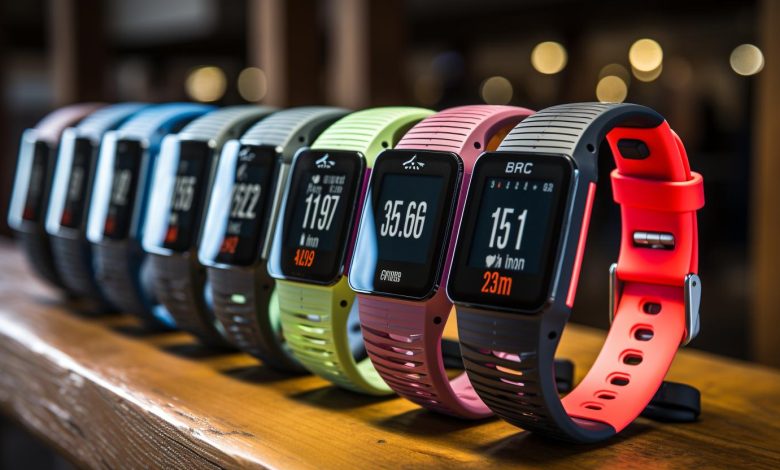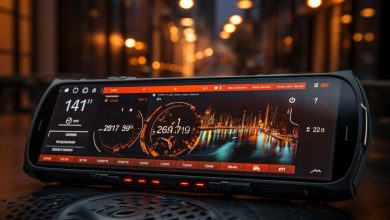Choosing the Right Fitness Tracker for Running: Features to Consider

Are you ready to take your running to the next level? Look no further than this guide on choosing the right fitness tracker for your needs.
With a wide range of features to consider, such as compatibility with running apps, heart rate monitoring, GPS tracking, water resistance, and battery life, finding the perfect tracker can be overwhelming.
But fear not! We’ve got you covered with all the information you need to make an informed decision and enhance your running experience.
Compatibility With Running Apps
If you’re a dedicated runner, it’s essential to find a fitness tracker that is compatible with your favorite running apps. The ability of your fitness tracker to sync data and integrate seamlessly with these apps can greatly enhance your running experience.
Data syncing is one of the key features to consider when choosing a fitness tracker for running. This feature allows you to transfer all your workout data, including distance covered, pace, heart rate, and calories burned, from your tracker to your preferred running app. By syncing this data, you can get a comprehensive overview of your performance and progress over time. It also enables you to analyze and track specific metrics that are important for improving your running performance.
App integration is another crucial aspect to look for in a fitness tracker. It ensures that the device can connect with popular running apps like Strava, Nike Run Club, or Adidas Running. App integration allows you to make use of advanced features offered by these apps such as personalized training plans, audio coaching during runs, social sharing options with fellow runners, and even competing in virtual races.
Heart Rate Monitoring
To accurately monitor your heart rate while running, make sure the tracker has built-in heart rate monitoring. This feature is crucial for optimizing your training and achieving your fitness goals. A good fitness tracker should provide accurate and real-time heart rate data, allowing you to track your intensity levels and train within specific heart rate zones.
Heart rate training zones are essential for runners as they help determine the intensity of their workout. By staying within these zones, you can maximize the effectiveness of your training and avoid overexertion or undertraining. Here’s a breakdown of the different training zones:
| Zone | Intensity Level | Benefits |
|---|---|---|
| Zone 1 | Very light | Promotes recovery and fat burning |
| Zone 2 | Light | Improves endurance and aerobic capacity |
| Zone 3 | Moderate | Enhances cardiovascular fitness |
| Zone 4 | Hard | Increases speed and anaerobic threshold |
In addition to monitoring your heart rate during workouts, a fitness tracker with calorie tracking capabilities can provide valuable insights into your energy expenditure. By knowing how many calories you burn during each run, you can manage your nutrition better and ensure that you’re fueling appropriately for optimal performance.
When choosing a fitness tracker for running, make sure it offers reliable heart rate monitoring and calorie tracking features. These tools will not only help you train more effectively but also provide valuable data to assess your progress over time. So lace up those shoes, strap on that tracker, and get ready to take control of your running journey!
GPS Tracking
Make sure you have a fitness tracker with GPS tracking capabilities to accurately track your running route and distance. GPS stands for Global Positioning System, and it uses satellites to determine your exact location on Earth. This technology is essential for runners who want accurate data about their workouts.
When it comes to accuracy, GPS trackers are superior to other types of fitness trackers. They can pinpoint your location with great precision, allowing you to know exactly where you are at all times during your run. This accuracy is crucial when it comes to tracking distance, as a slight deviation from your planned route can result in inaccurate readings.
GPS tracking also offers benefits beyond just accuracy. It allows you to plan and follow specific routes for your runs. Most fitness tracker apps offer route planning features that let you map out the path you want to take beforehand. Once you start running, the GPS will guide you along that route, ensuring that you stay on track and reach your desired destination.
Water Resistance
When it comes to water resistance, make sure your fitness tracker can withstand sweat and rain during your runs. It’s important to choose a device that is not only resistant to water but also durable enough for regular use.
Many fitness trackers on the market today offer some level of water resistance, allowing you to wear them while sweating or running in the rain without worrying about damage. However, if you plan on swimming with your tracker, you’ll need to check if it has swimming compatibility. Some models are specifically designed for swimmers and can track your laps and strokes in the pool.
Durability is another key factor when considering water resistance. You want a fitness tracker that can handle the rigors of daily workouts and outdoor activities without falling apart. Look for trackers made from high-quality materials that are known for their durability, such as stainless steel or reinforced plastic.
Having a waterproof or water-resistant fitness tracker gives you peace of mind during your runs and workouts, knowing that it won’t be damaged by moisture.
Now that we’ve covered the importance of water resistance and durability, let’s move on to another essential feature: battery life…
Battery Life
Having a long-lasting battery is crucial when considering a fitness tracker. After all, you don’t want your device to die in the middle of a workout or while you’re tracking your sleep patterns.
When it comes to battery life, there are several factors to consider:
– Longevity: Look for a fitness tracker that offers an extended battery life. This will ensure that you can go multiple days without needing to recharge.
– Charging Time: Nobody wants to wait around forever for their device to charge. Opt for a fitness tracker that has fast charging capabilities, so you can get back to using it as soon as possible.
– Power-saving Features: Some fitness trackers come with power-saving modes or features that help conserve battery life. These can be handy if you’re planning on using your device for extended periods without access to a charger.
– Battery Indicator: It’s always helpful to have a clear indication of how much juice is left in your fitness tracker’s battery. Look for devices that display the remaining battery percentage or have other visual indicators.
When choosing a fitness tracker, keep these considerations in mind to ensure you find one with optimal longevity and charging time.
Conclusion
When it comes to choosing the right fitness tracker for running, there are a few key features to consider.
First and foremost, make sure it is compatible with your favorite running apps so you can seamlessly track your progress.
Secondly, opt for a device that offers heart rate monitoring capabilities to keep an eye on your exertion levels.
Additionally, having GPS tracking is essential for accurately measuring distance and pace.
Don’t forget about water resistance if you enjoy outdoor runs in all weather conditions.
And lastly, check the battery life to ensure it can keep up with your active lifestyle.
With these factors in mind, you’ll be well-equipped to make an informed decision and find the perfect fitness tracker that suits your running needs.
Now ask yourself, can you picture yourself conquering those miles with confidence while wearing the perfect fitness tracker?


